Effect of Nozzle Port Shape of Fuel Injector of Micro Gas Turbine Engine Combustor on Mixture Gas Formation for Combustion
Abstract
:1. Introduction
2. Specification of the Model Combustor with the Fuel Injector
2.1. Structure of the Combustion Chamber of the Model MGT Engine
2.2. Geometry of the Model Fuel Injector
3. Governing Equation and Analysis Conditions
3.1. Governing Equation
- Three-dimensional steady flow.
- Incompressible and turbulent flow.
- Isothermal flow.
- (1)
- Continuity equation:
- (2)
- Momentum equation:where ,where is the particle velocity vector and g is the gravity vector.
- (3)
- Extended k-ε closure turbulent model (KECHEN) equation.where ,,where k is the turbulent kinetic energy and ε is the energy dissipation rate.
- (4)
- Energy dissipation equation:where ()
3.2. Numerical Domain and the Optimized Grid
3.3. Boundary and Initial Condition
3.4. Configuration of the Model’s Nozzle Port
4. Results and Discussion
- Penetration.
- Diffusivity.
- Volume flowrate of the injected fuel.
4.1. Flow Phenomena of the Mixed Gas at the Exit of the Injection Ports
4.2. Analysis of Simulation Results
5. Conclusions
Author Contributions
Funding
Institutional Review Board Statement
Informed Consent Statement
Data Availability Statement
Acknowledgments
Conflicts of Interest
References
- Future of energy report. In Proceedings of the 26th UN Climate Change Conference of the Parties (COP26), Glasgow, UK, 31 October–13 November 2021.
- Jang, S.H. Gas Turbine Optimum Operation Support System for Power Generation. In Proceedings of the 2019 Asia Pacific Gas Conference, Bali, Indonesia, 29–31 October 2019. [Google Scholar]
- Basic Electricity Supply and Demand Plan 8th; Korea Ministry of Trade, Industry and Energy: Sejong City, Korea, 2017; p. 611.
- Jung, S.H.; Youn, S.J.; Noh, T.W.; Kang, S.Y.; Jung, M.H.; Woo, T.K. Repair Maintenance Technology for High Temperature Components in Gas Turbine. J. Korean Soc. Comput. Fluids Eng. 2021, 12, 58–61. [Google Scholar]
- Shin, H.D.; Kang, D.W.; Kim, T.S.; Choi, M.K.; Park, P.J. Design Parameter Sensitivity Analysis of a 200 Kw Class Micro Gas Turbine System. J. Fluid Mach. 2012, 15, 39–45. [Google Scholar] [CrossRef]
- Hamilton, S.L. Microturbines Distributed Generation: A Nontechnical Guide; Chambers, A., Ed.; PennWell Corporation: Nashville, TN, USA, 2001; pp. 33–72. [Google Scholar]
- Sehra, A.K.; Shin, J. Revolutionary Propulsion Systems for 21st Century Aviation; NASA: Washington, DC, USA, 2003; p. TM-2003-212615.
- Rodgers, C.; Watts, I.; Nichols, K.; Brent, R. Microturbines. In Distributed Generation; Borbely, A.M., Kreider, J., Eds.; CRC Press: Boca Raton, FL, USA, 2001; pp. 119–150. [Google Scholar]
- Capstone Turbine Corporation. Advanced Micro Turbine System (AMTS) Final Technical Report; U.S Department of Energy, DOE Project: Washington, DC, USA, 2008; p. 155.
- Oh, J.S.; Lee, H.S. Prototype Development of A 75 Kw Class Micro Turbine Design/Manufacture and Self-Sustaining Test. J. Fluid Mach. 2002, 12, 307–313. [Google Scholar]
- Lee, J.J.; Kim, T.S. Analysis of Operation Performance of a Micro Gas Turbine Generator System. J. Fluid Mach. 2004, 8, 13–21. [Google Scholar]
- Lee, J.J.; Yoon, J.E.; Kim, T.S. Operation Simulation of a Microturbine Based on Test Data. J. Fluid Mach. 2006, 9, 22–28. [Google Scholar]
- Lee, J.J.; Yoon, J.E.; Kim, T.S.; Sohn, I.L. Performance Test and Component Characteristics Evaluation of a Micro Gas Turbine. J. Mech. Sci. Technol. 2007, 21, 141–152. [Google Scholar] [CrossRef]
- Lee, J.J.; Jeon, M.S.; Kim, T.S. The Influence of Water and Steam Injection on the Performance of a Recuperated Cvcle Microturbine for Combined Heat and Power Application. Appl. Energy 2010, 87, 1307–1316. [Google Scholar] [CrossRef]
- Lee, J.H.; Kim, T.S. Analysis of Design and Part Load Performance of Micro Gas Turbine/ Organic Rankine Cycle Combined Systems. J. Mech. Sci. Technol. 2006, 20, 1502–1513. [Google Scholar] [CrossRef]
- Davis, L.B.; Washam, R.M. Development of a Dry Low NOx Combustor. J. ASME 1989, 79153, 89-GT-255. [Google Scholar]
- Schorr, M.M.; Chalfin, J. Gas Turbine NOx Emissions Approaching Zero—Is it Worth the Price. Gen. Electr. Res. Rep. 1999, 9, GER-4172. [Google Scholar]
- Ommi, F.; Azimi, M. Most effective combustion technologies for reducing NOx emissions in aero gas turbines. Int. J. Multiphys. 2012, 6, 417–424. [Google Scholar] [CrossRef] [Green Version]
- Funke, H.H.; Beckmann, W.N.; Abanteriba, S. An overview on dry low NOx micromix combustor development for hydrogen-rich gas turbine applications. Int. J. Hydrogen Energy 2019, 44, 6978–6990. [Google Scholar] [CrossRef]
- Soner, Ş. Thermodynamic analysis of a small-scale gas turbine jet engine. Int. J. Aeronaut. Astronaut. 2021, 2, 14–17. [Google Scholar]
- Lee, B.E. Gas Turbine for Power Generation, 2nd ed.; Kyungmoon Publishers: Seoul, Korea, 2019. [Google Scholar]
- Chen, Y.S.; Kim, S.W. Computation of Turbulent Flows using an Extended κ-ε Turbulence Closure Model. NASA Interim Rep. 1987, 10, CR-179204. [Google Scholar]
- Bathie, W.W. Fundamentals of Gas Turbines, 2nd ed.; John Wiley & Sons: Toronto, ON, Canada, 1996. [Google Scholar]
- Concentration Heat and Momentum Limited. The Chen-Kim Modified KE-EP Turbulence Model. 2021. Available online: https://www.cham.co.uk/phoenics/d_polis/d_enc/turmod/enc_t342.htm (accessed on 23 January 2022).
- Chung, K.S.; Kim, C.H. A Numerical Study on Solidity Characteristics of the Cross-flow Power Turbine (CPT). Korean J. Air-Cond. Refrig. Eng. 2010, 22, 562–566. [Google Scholar]
- Banks, J. Turbulence Modeling in PHOENICS 2021. Available online: https://www.cham.co.uk/phoenics/d_polis/d_enc/turmod/enc_tu.htm (accessed on 23 January 2022).
- Carlo, L.P. Development and Validation of an Improved Wall-Function Boundary Condition for Computational Aerodynamics. Master’s Thesis, KTH Royal Institute of Technology, Stockholm, Sweden, 2021. [Google Scholar]
- Kim, B.Y.; Kim, B.H.; Gill, J.H. CFD Simulation of Nozzle-turbine in Gas Turbine Engine using open source CFD code open foamn. J. Korean Soc. Comput. Fluids Eng. 2012, 5, 564–567. [Google Scholar]
- Bouvet, N.; Davidenko, D.; Chauveau, C.; Pillier, L.; Yoon, Y. On the simulation of laminar strained flames in stagnation flows: 1D and 2D approaches versus experiments. Combust. Flame 2013, 161, 438–452. [Google Scholar] [CrossRef]
- Johnson, R.F.; VanDine, A.C.; Esposito, G.L.; Chelliah, H.K. On the Axisymmetric Counterflow Flame Simulations: Is There an Optimal Nozzle Diameter and Separation Distance to Apply Quasi One-Dimensional Theory. Combust. Sci. Technol. 2015, 187, 37–59. [Google Scholar] [CrossRef]
- Lim, O.T.; Lee, S.J. Influence of nozzle hole diameter and orifice diameter on dme spray to get the similar heat value with diesel spray using the constant volume chamber. Int. J. Autom. Technol. 2016, 17, 1023–1031. [Google Scholar] [CrossRef]
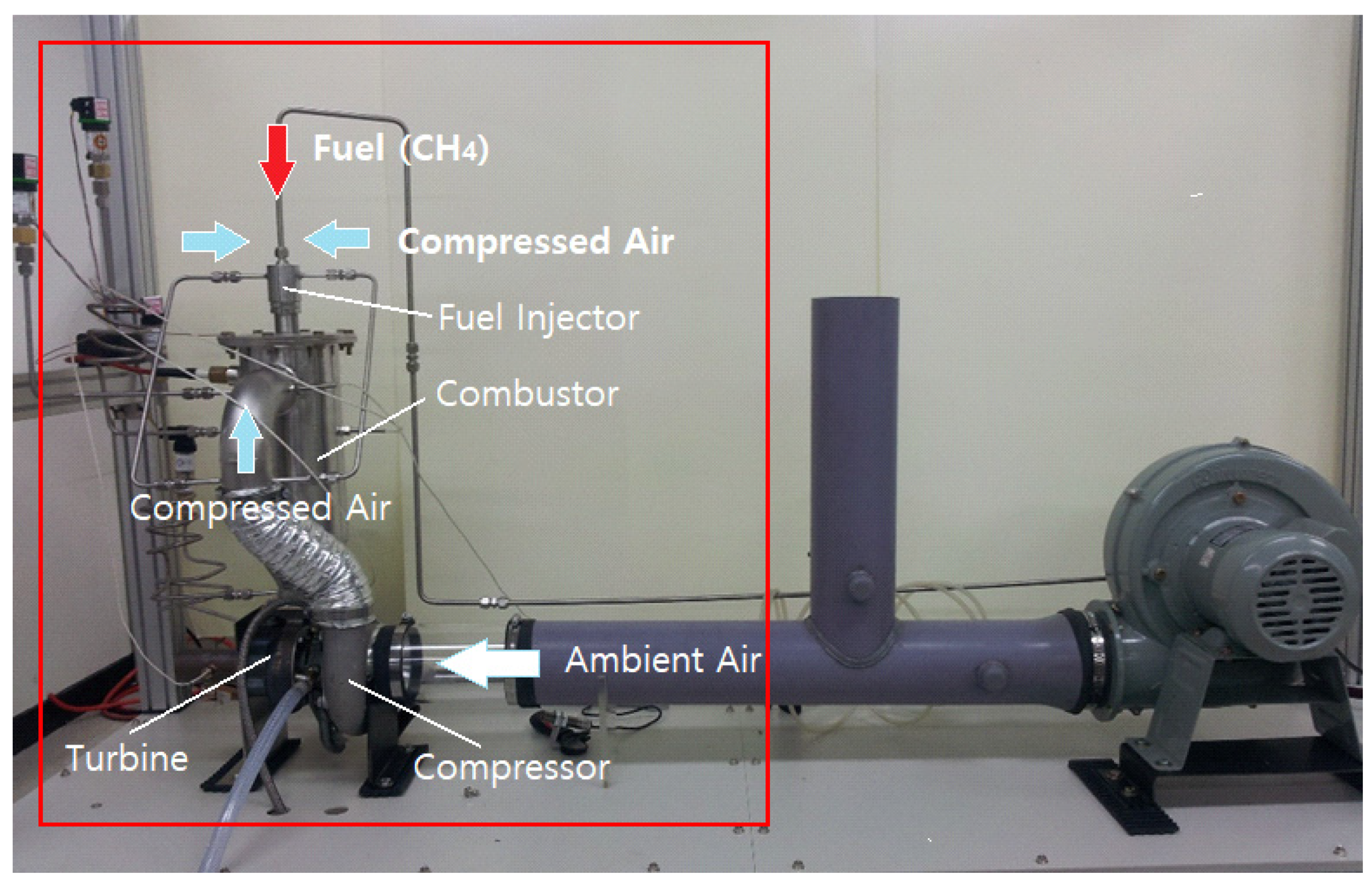
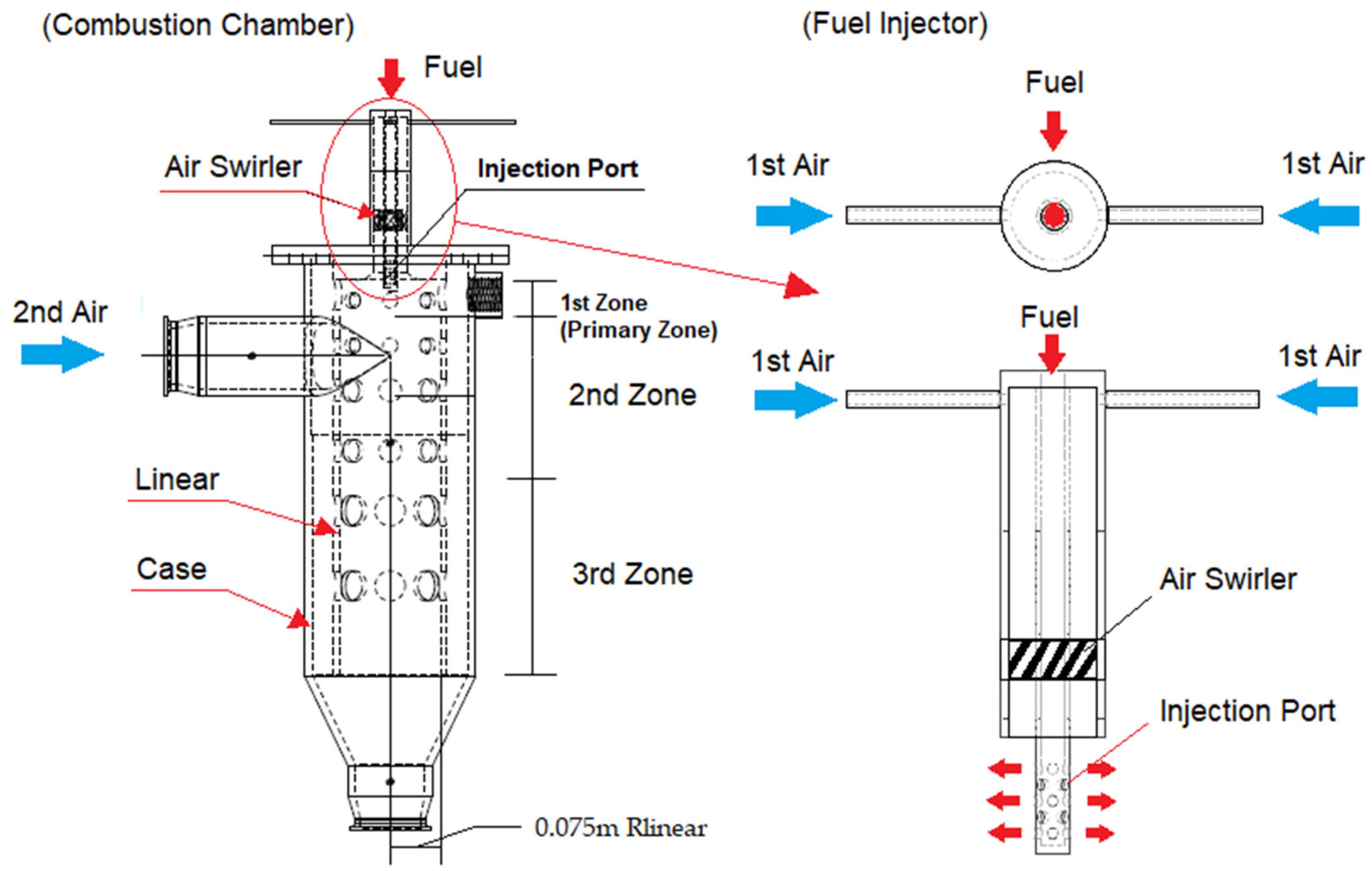
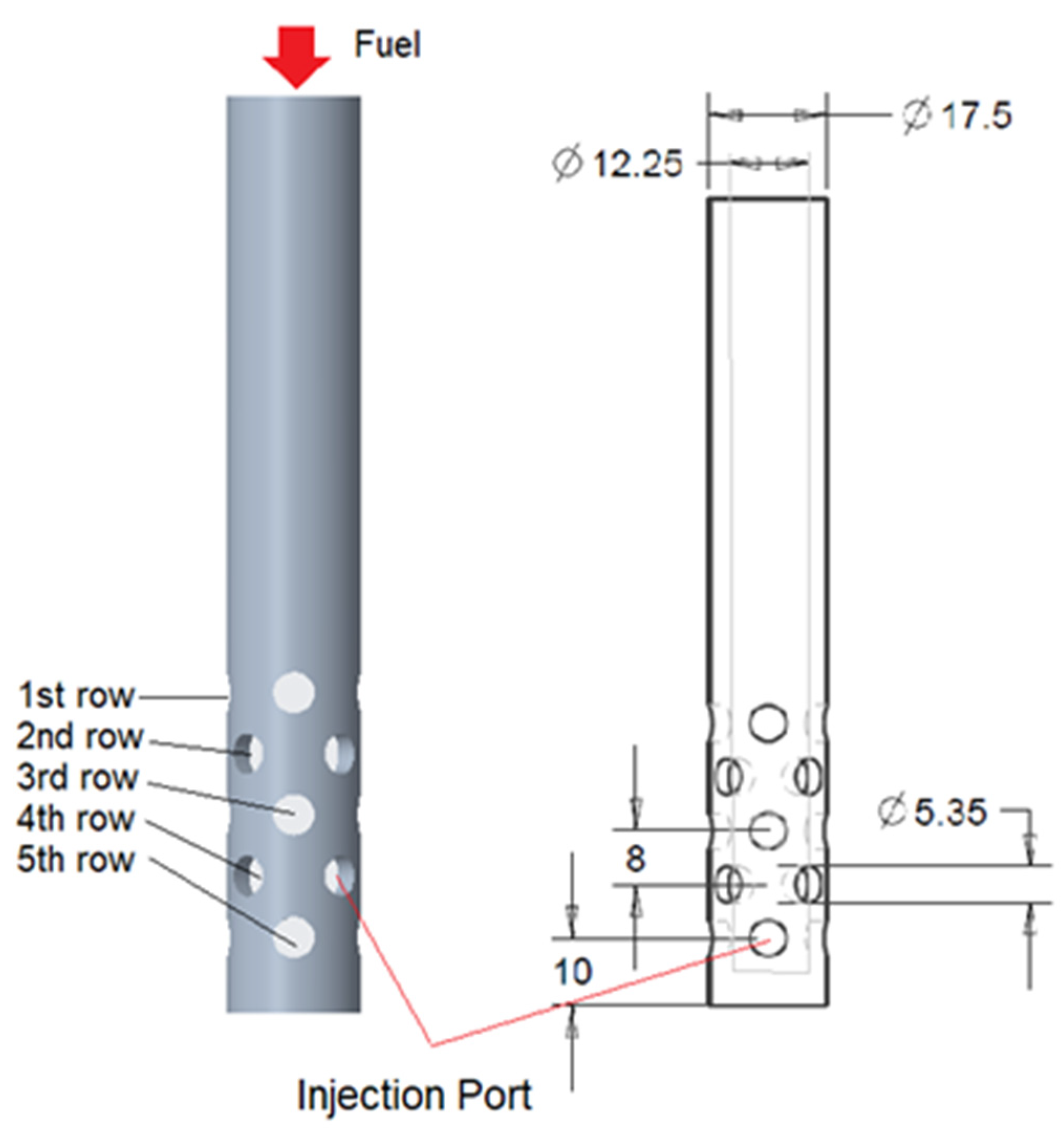
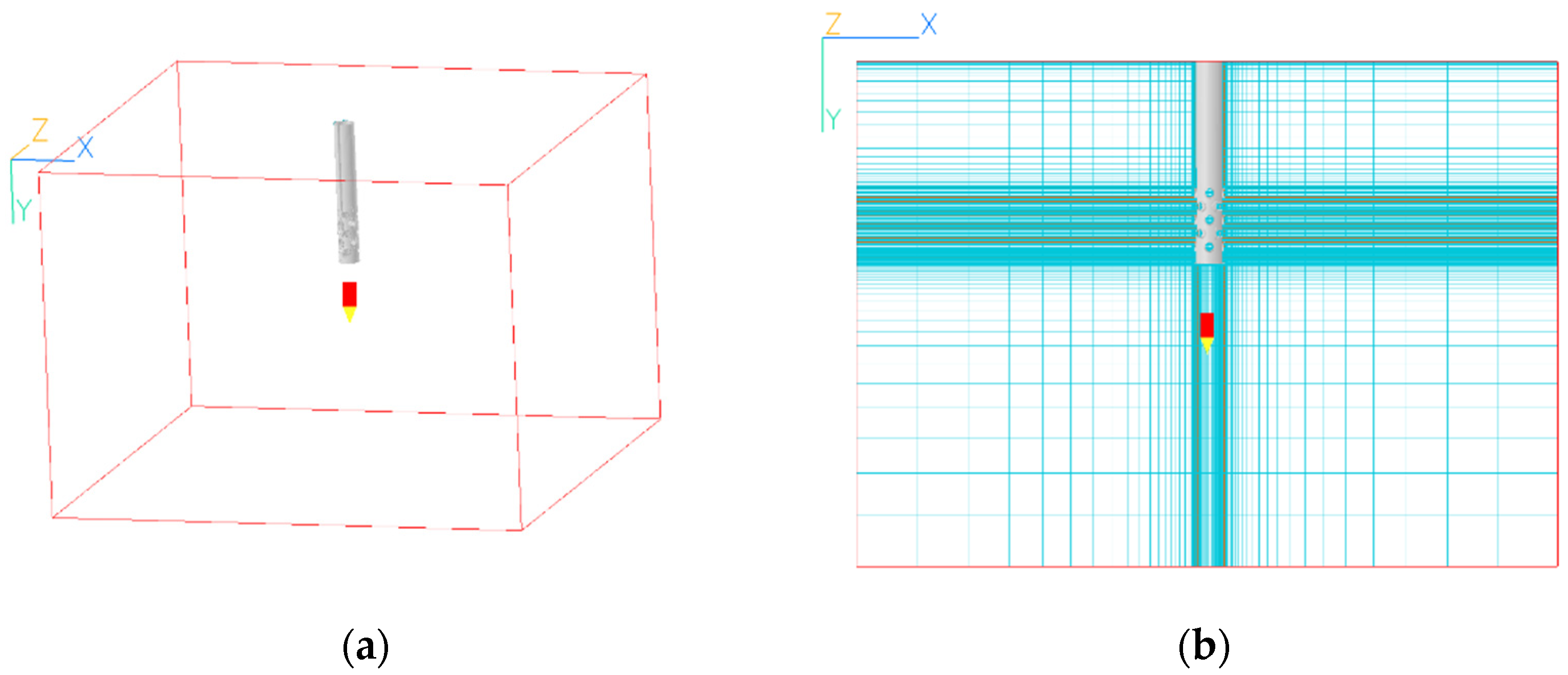
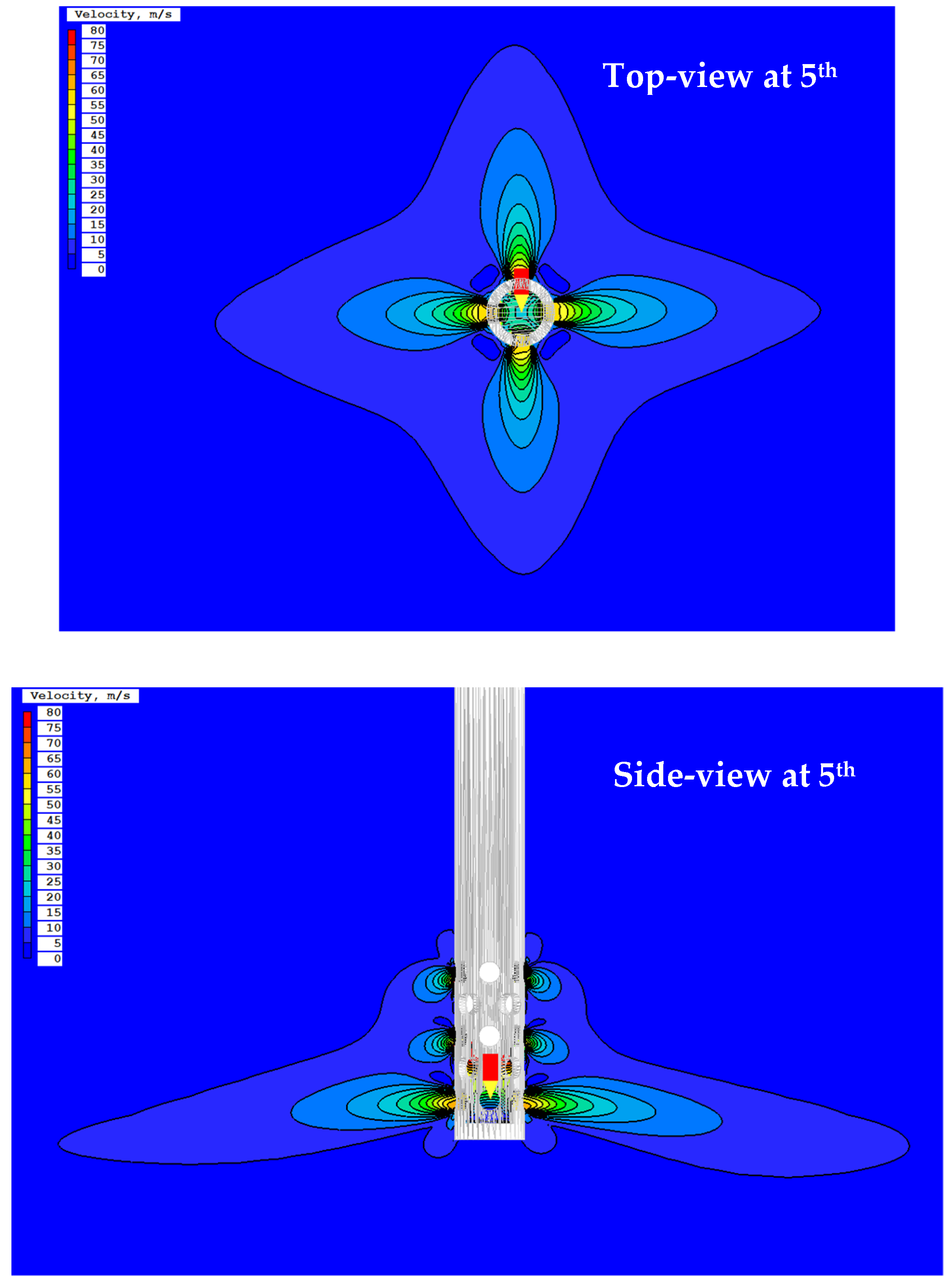

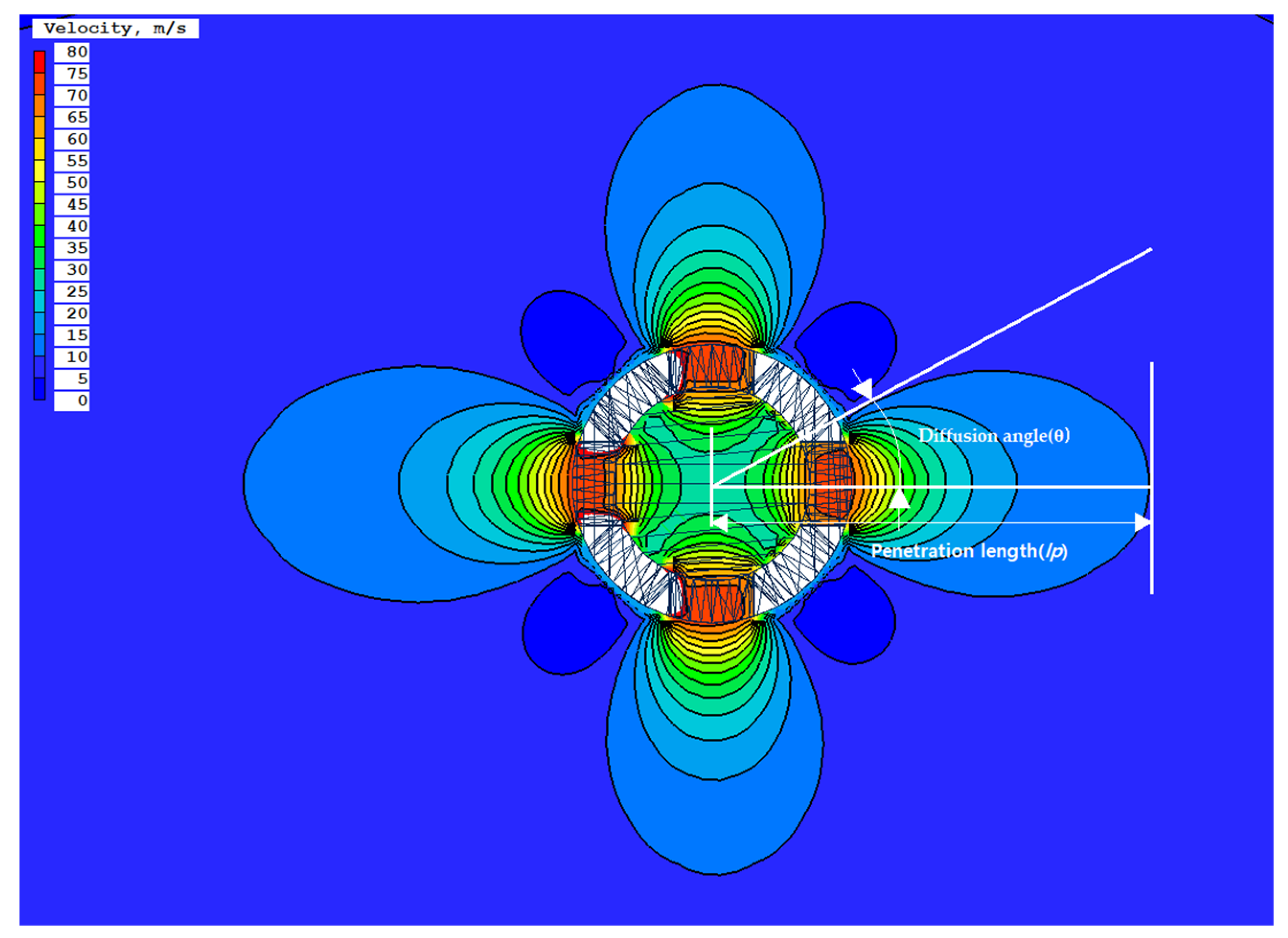
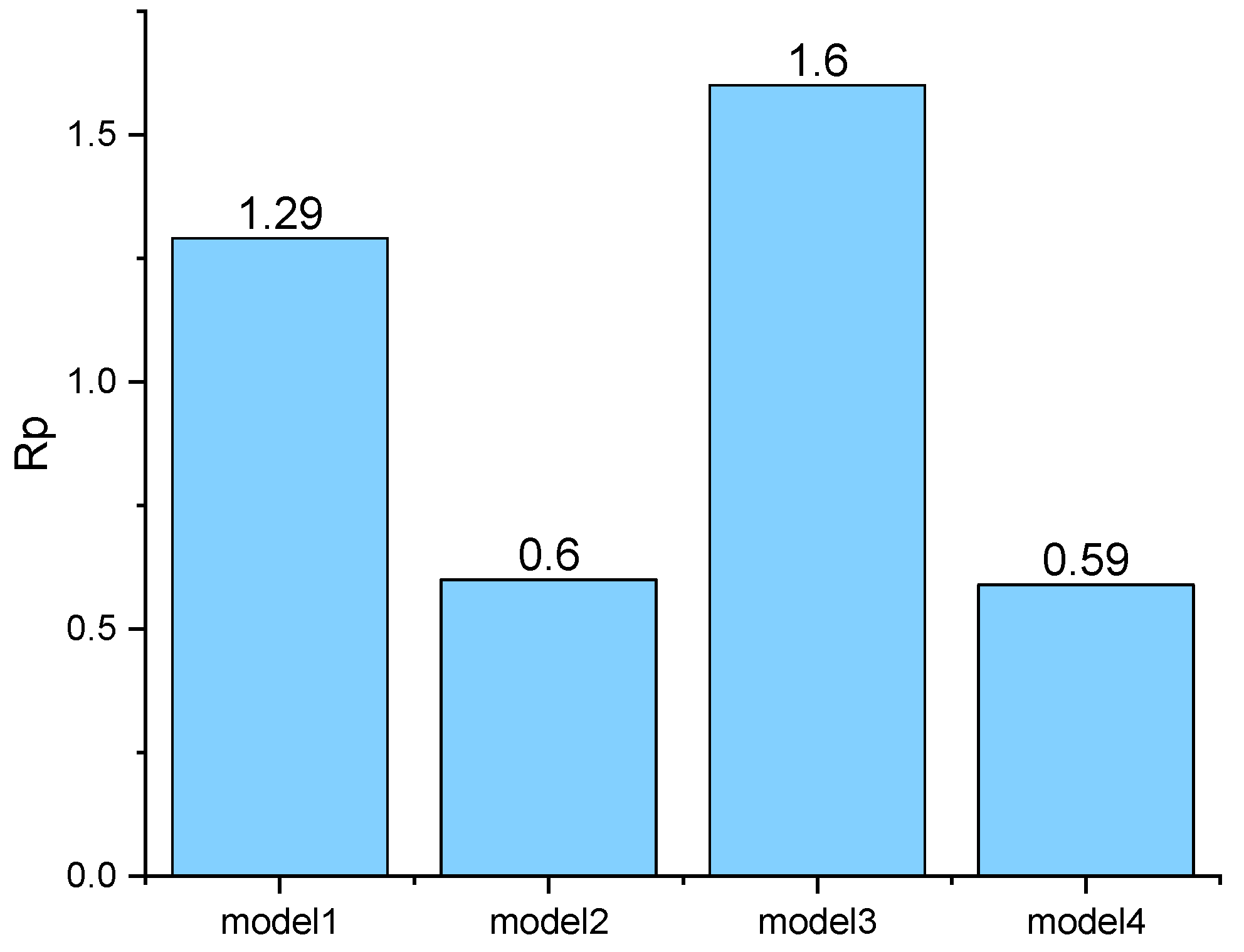
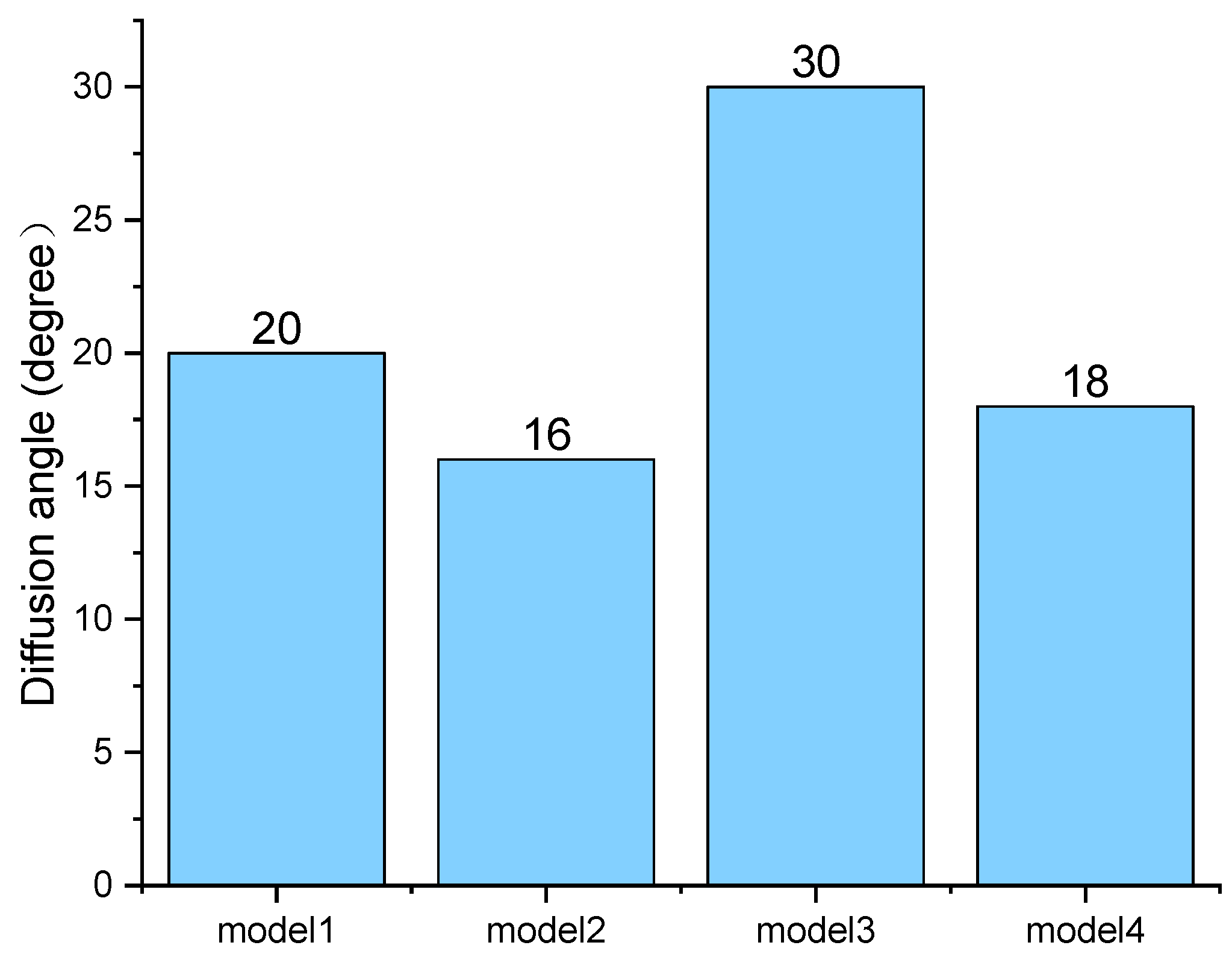
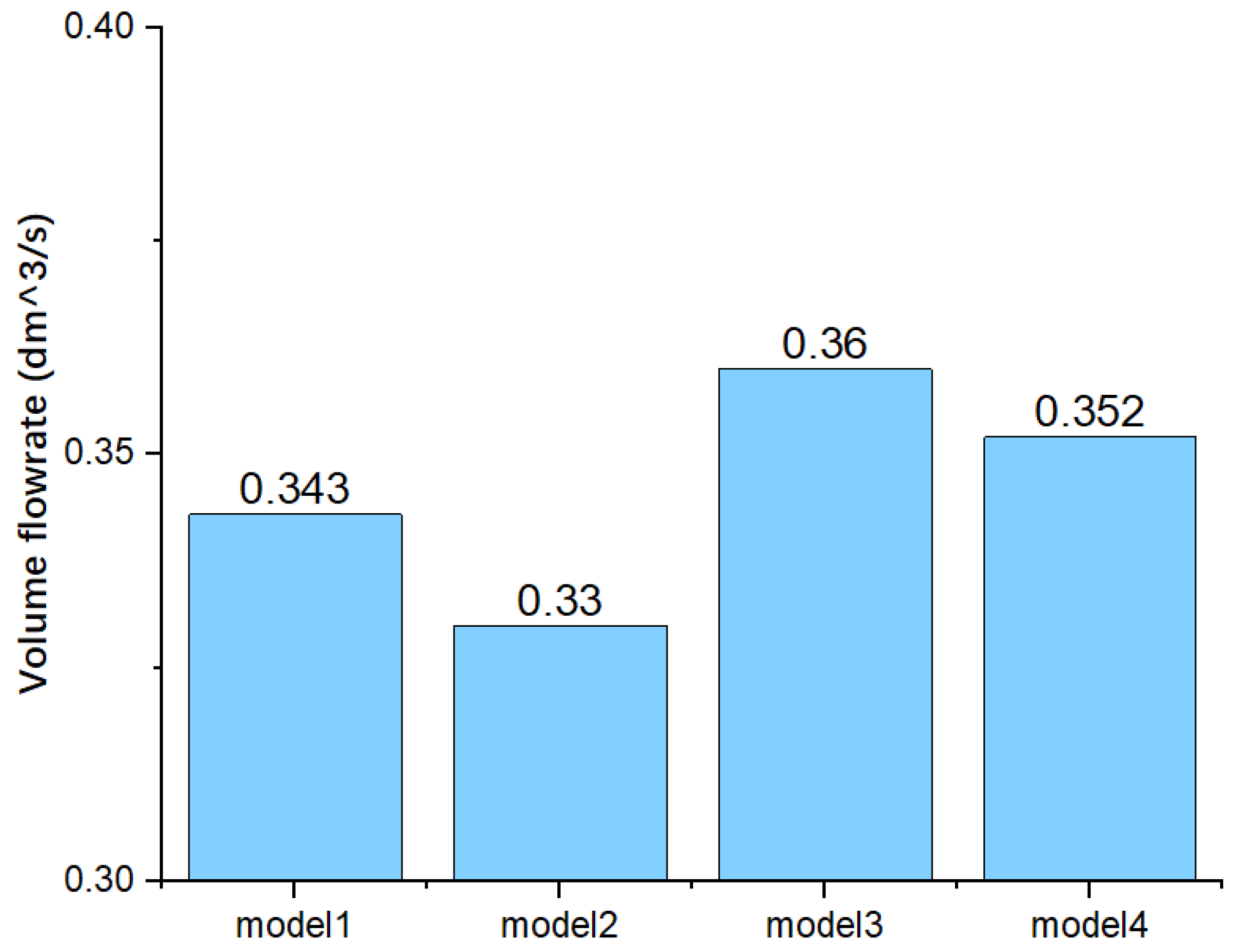
| Engine Class | Micro | Mini | Small | Medium | Large |
|---|---|---|---|---|---|
| Max. Thrust (lb) | <10 | 10 to 100 | 100 to 1000 | 1000 to 10,000 | >10,000 |
| Boundary Surface | Condition |
|---|---|
| Inlet | Inlet velocity (300 m/s) of methane (CH4) at the injector inlet |
| Side and top surfaces | Atmospheric pressure (ambient condition) |
| Nozzle surface | No slip on the surface |
| Shape of the Nozzle Hole and Its Size (R1 = 1 mm) | |||
|---|---|---|---|
| Model 1 (sharp-edged) |  | Model 2 (round-edged at exit) | 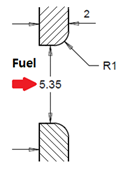 |
| Model 3 (round-edged at inlet) |  | Model 4 (round-edged for both) |  |
Publisher’s Note: MDPI stays neutral with regard to jurisdictional claims in published maps and institutional affiliations. |
© 2022 by the authors. Licensee MDPI, Basel, Switzerland. This article is an open access article distributed under the terms and conditions of the Creative Commons Attribution (CC BY) license (https://creativecommons.org/licenses/by/4.0/).
Share and Cite
He, Y.; Kim, C.-H. Effect of Nozzle Port Shape of Fuel Injector of Micro Gas Turbine Engine Combustor on Mixture Gas Formation for Combustion. Fluids 2022, 7, 184. https://doi.org/10.3390/fluids7060184
He Y, Kim C-H. Effect of Nozzle Port Shape of Fuel Injector of Micro Gas Turbine Engine Combustor on Mixture Gas Formation for Combustion. Fluids. 2022; 7(6):184. https://doi.org/10.3390/fluids7060184
Chicago/Turabian StyleHe, Yang, and Chul-Ho Kim. 2022. "Effect of Nozzle Port Shape of Fuel Injector of Micro Gas Turbine Engine Combustor on Mixture Gas Formation for Combustion" Fluids 7, no. 6: 184. https://doi.org/10.3390/fluids7060184
APA StyleHe, Y., & Kim, C.-H. (2022). Effect of Nozzle Port Shape of Fuel Injector of Micro Gas Turbine Engine Combustor on Mixture Gas Formation for Combustion. Fluids, 7(6), 184. https://doi.org/10.3390/fluids7060184






